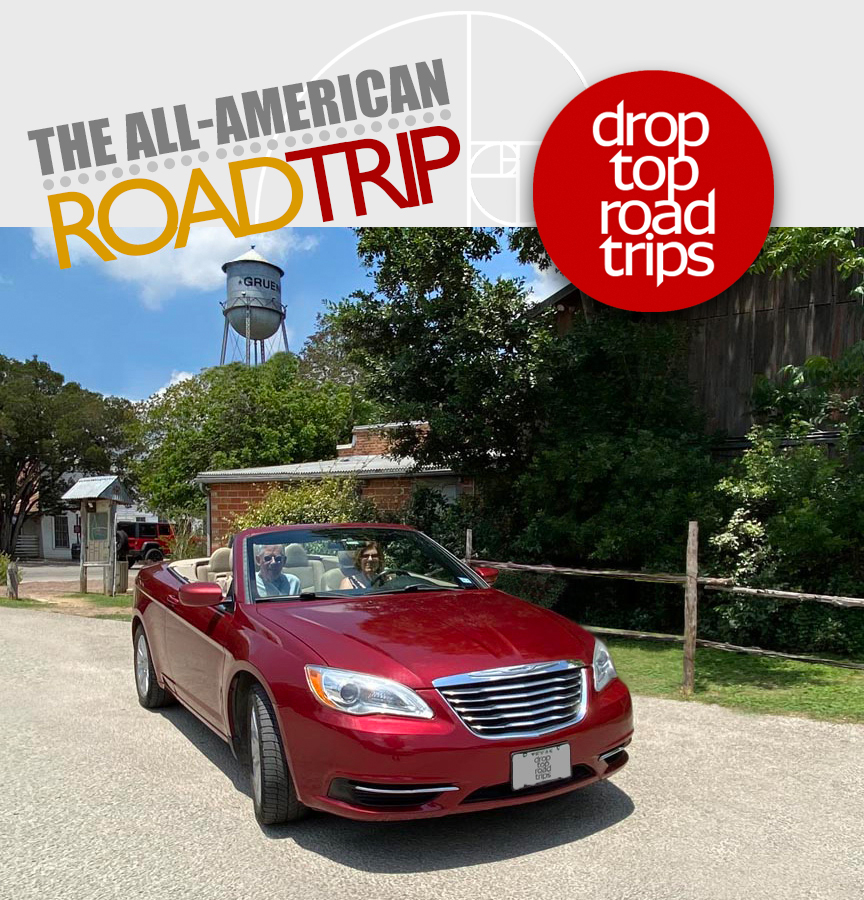

UPDATED February 22, 2025. Hello. My name is Steve Holloway. I’m the founder, writer, photographer, creative director, designer, content manager and navigator of Drop Top Road Trips the virtual home for images and stories from the road with an emphasis on photography.
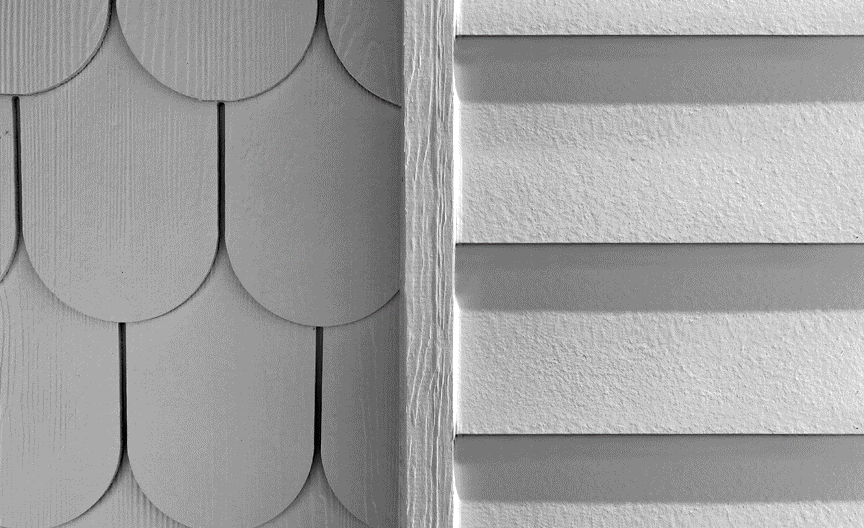

After a career as an assignment photographer, shooting film for years then digital single lens reflex cameras, I got my first iPhone, an iPhone 4.
Nine years later, when I upgraded to the iPhone 11 Pro Max, I had gone from only using the camera in my pocket occasionally to only shooting on iPhone.
Today, I write about and publish stories and galleries about photography and road trips here and in my newest digital platform Nonlinear Content. Keep reading for images and stories from the road. For photography and Shot on iPhone galleries and how-to guides, jump to Nonlinear Content.


NAVIGATE:
- About
- Where it All Started
- Images & Stories from the Road
- Discovering Route 66
- The Birth of the All American Road Trip
- Our First Road Trip
- Bio
- Blog Posts
About.
WRITTEN & PHOTOGRAPHED BY: STEVE HOLLOWAY
I think the about page is the most important page on any blog. It’s how you get to know the people telling you a blog’s story. How you get to know us. And how you find out what to expect while you’re here.
Since everything we would have put on our home page would have been “about us”, we put it all together here and skipped the home page.
SO, WHAT CAN I TELL YOU ABOUT US?
First of all (and this is significant), we do not outsource our blog content.
I did use an image first published by The Paper 1901, a Dwight, Illinois newspaper, in a story about their “Texaco Man” as part of our Texaco Dr Pepper Blog Post.
That’s as close to outsourcing as we’ve gotten.
Except for that image, all of the content, all of the images and stories from the road you see and read here are original.
All of it.
I create all the material and write all the content we use giving you a first person point-of-view perspective from the road (for more on my particular skill set, read my BIO at the end of this page).
HOW ABOUT POPUP ADS AND VIDEOS?
You won’t find any here. Not a one. You also won’t find any “trick” copy telling you over and over to get ready for something while trying to “trick” you into reading around endless popup ads and videos.
KEEP READING.
You’ll find out how road trips started for us. What’s behind the images and stories you see. You’ll find a brief history of road trips in America and that short BIO I mentioned before.

My wife Nicole and I have been taking road trips since we drove Route 66 over 15 years ago.
We started at the south entrance of the Grand Canyon and retraced Route 66, mile for mile, between there and Texas.
We experienced what mid-1950s travelers must have experienced around the time of the birth of The All American Road Trip, free to travel with their families on newly completed highways with plenty of gas stations, restaurants and motels along the way.
We’ve found road trips offer a level of spontaneity no other mode of travel can.
Decide to go somewhere in the morning and be on the road that afternoon. It’s that simple.
You can change your route, change where you’re going to eat, change where you’re going to stay or how long you’ll be there. Change your mind about anything. And do it all while you’re driving down the road.

The plan for Drop Top Road Trips has been to create an on-line publication. A virtual magazine to give our trips a voice and talk about where to eat, where to stay, what to do and what to expect out on the road.
We started planning trips. Developing story ideas. Getting ready to get out on the road.
Little did we know that, as we got close to our design and launch dates the really, really, really unexpected would happen. Covid-19.
We watched the virus close restaurants, shutter hotels and limit travel. Some places are starting to reopen. Unfortunately some places aren’t. Places like Soda Pops in Boerne, former home of Hot Rod Nights, a popular monthly car show night that attracted every imaginable car and was a favorite for burgers, beer, malts, ice cream and live music.
We watched the virus grind us to a halt before we drove the first mile. So we decided to launch with posts from past road trips. Trips to give you:
- An idea of what to expect on the road.
- Tips that help you find those killer places to eat and authentic places to stay.
- Strategies to use when planning your next (or maybe your first) road trip.
Most of our road trips are in Texas but we’ve also made it to Arizona, New Mexico, Missouri, Kansas and Colorado.
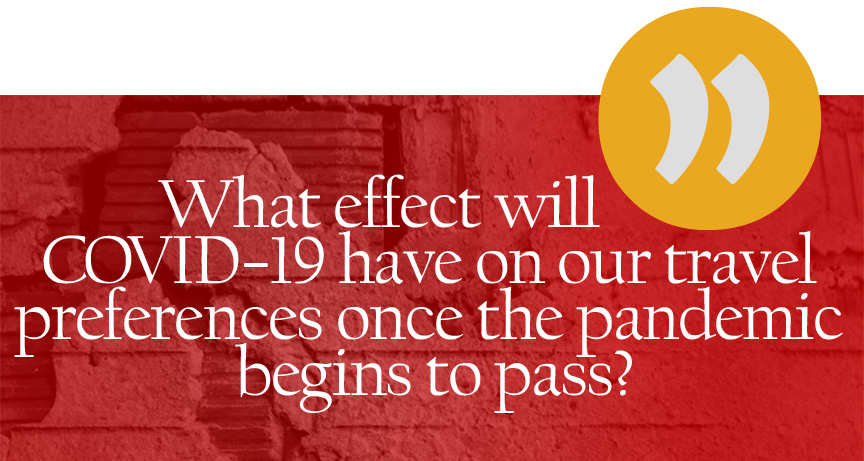
Looking forward, we’re trying to imagine what post-Covid-19 travel will look like.
A survey by OnePoll and Ford Motor Company showed 73 percent of respondents would rather take a road trip than fly to a vacation destination (this according to Car and Driver Magazine citing a June, 2020 O: The Oprah Magazine story).
Will flying give way to driving for more travelers who don’t feel comfortable in close quarters with strangers for hours at a time? Possibly a lot more travelers?
Will we see a resurgence of the road trip as the preferred means of travel by travelers who only occasionally (or never) took road trips before?
Where will you feel safer?
An airport? A plane? A car? Will you be one of those travelers rethinking the classic American road trip?
UPDATE JANUARY 12, 2022. Even though COVID levels keep bouncing up and down, we’re finding restaurants, hotels, venues and destination attractions open for business. While some areas/locations have new requirements for travelers, we’re having no trouble out on the road and everyone we know who has flown out of town (and out of the country) had no big problems traveling. We can’t say the travel experience has returned to a pre-COVID level but it’s definitely has found a new “normal”.
UPDATE OCTOBER 18, 2022. We just returned from a trip to New England. We flew through the Austin, Chicago, Manchester and Boston airports and can report that travel is back to a pre-Covid 19 experience. No masks. Full Planes. People sitting next to each other. International might still vary from that but in the continental United States it’s travel as usual.
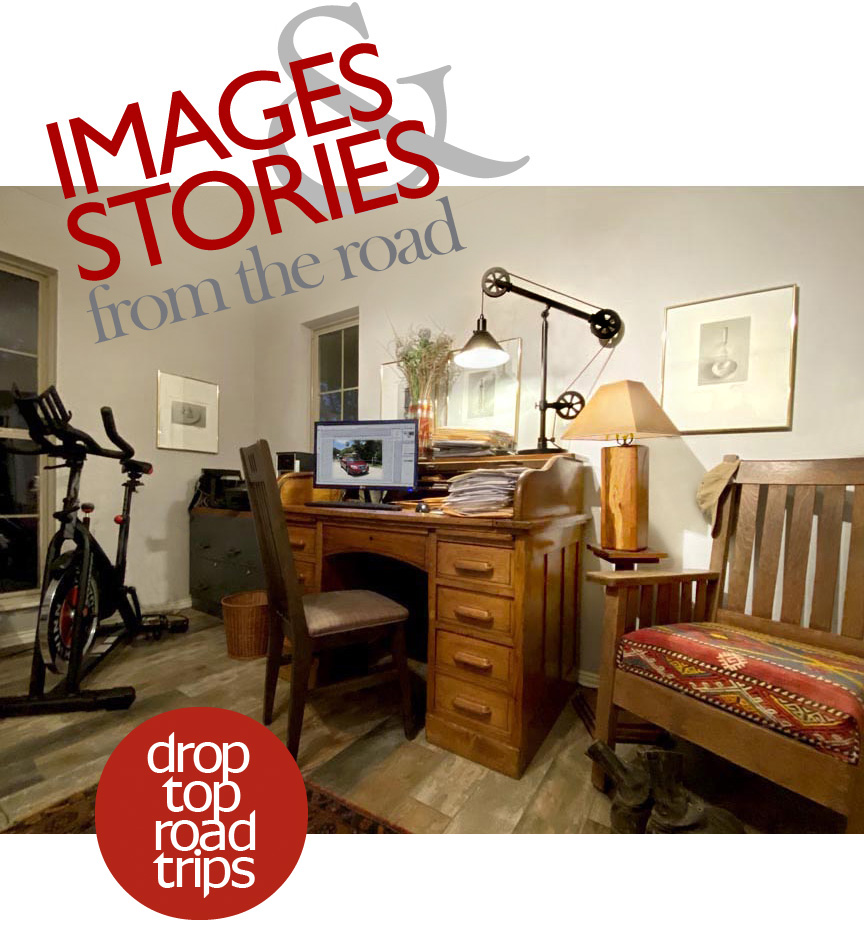
I started visualizing Drop Top Road Trips a little over a year ago as an on-line, virtual publication to bring you images and stories from the road.
I’ve worked to create a fusion of design, copy and photography that is fun to look at and to read.
UPDATE OCTOBER 18, 2022. We’ve been back on the road for almost a year and find few to no restrictions. See you out there!
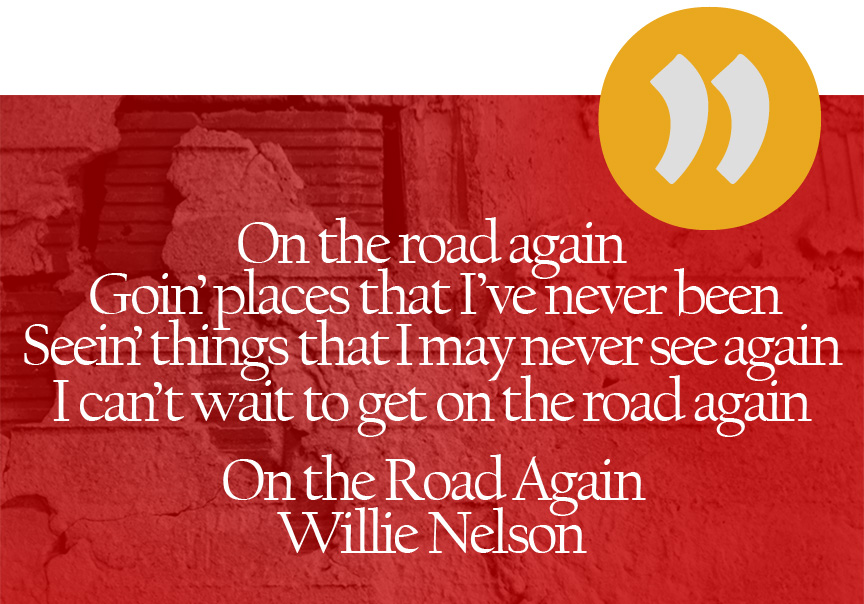
Today, we’re planning trips to be ready when the hotels, restaurants and destinations start opening up. We’ve already ventured out on a very limited basis and will post updates soon.
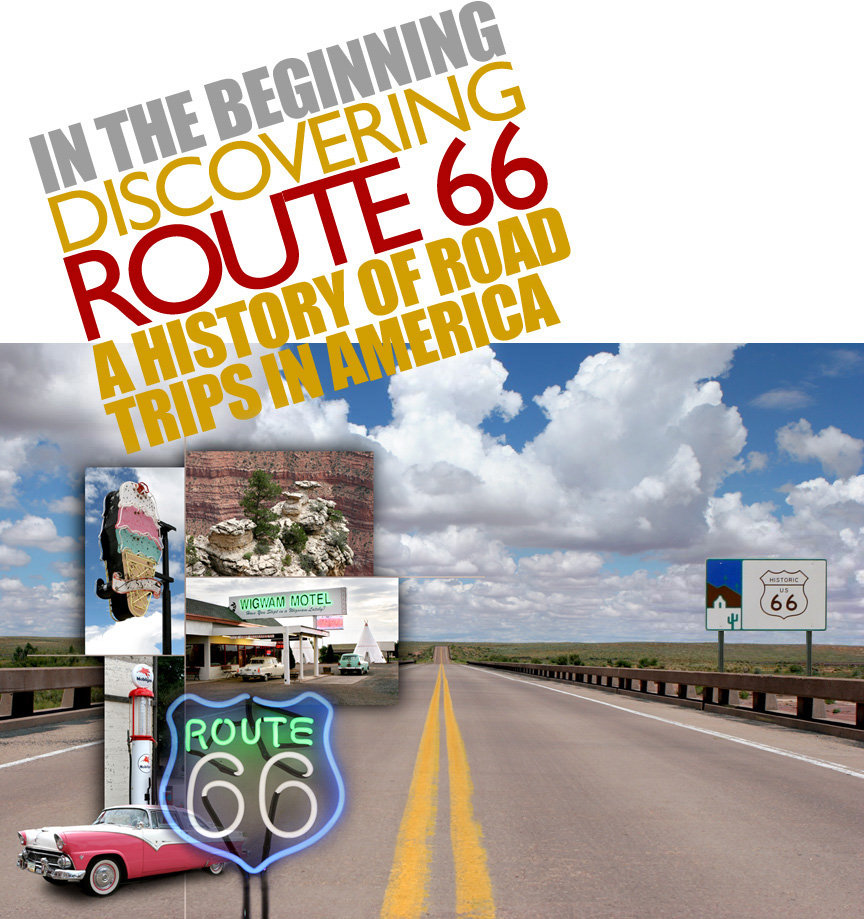
Route 66 is where road trips started for most Americans.
WRITTEN & PHOTOGRAPHED BY: STEVE HOLLOWAY
Route 66 created the mystique of the road trip in American car culture, of families getting everyone together and hitting the road on as little as a moment’s notice.
It’s a mystique immortalized in John Steinbeck’s “Grapes of Wrath” that portrayed Route 66 as the “mother road” used to escape the terrible effects of the dust bowl and depression.
And in the popular 1960s TV series Route 66, where Tod’s Corvette was driven from town to town, adventure to adventure.
But road trips have a history that stretches back to well before Route 66.

In the beginning.
There are documented road trips dating back to the first automobiles, around the turn of the century.
But the problems were almost insurmountable:
- The roads were impassable in some areas.
- Only a few people could afford an automobile (which cost close to a full year’s salary).
- Travelers had to take supplies for the duration of the trip because there weren’t restaurants and hotels all along the way.
- And, just to keep it interesting, the vehicles were unreliable so you had to bring parts, tools and enough know how to make most repairs on the road.

The birth of the All American Road Trip.
In 1910 there were 458,377 automobiles registered in the United States. In 1920 that total jumped to 8,131,522! Just five years later, Congress enacted a law for constructing a national highway. The number of automobiles on the road had more than doubled to 19,267,967.
Springfield, Missouri One Year Later:
John Woodruff (an entrepreneur from Springfield, Missouri) and Cyrus Avery (chairman of the Oklahoma Department of Highways) mapped out the now-famous diagonal course from Chicago to California. Then, on April 30, 1926 they sent a telegram from Springfield’s Colonial Hotel proposing the road be named Route 66.
And Route 66 was born!
In 1926, only 800 of the 2,545 miles that made up Route 66 were paved. The worst section, the 18 mile long Jericho Gap in Texas, was so bad when it rained that cars had to be pulled out of the mud by horse teams. It created a nice secondary income for local farmers.
Twenty years later:
Between the end of WWII in 1945 and the completion of the Interstate Highway System in 1955, a lot happened: Our soldiers came home; American industry grew along with middle income jobs; Suburbs were created; And automobiles became affordable to the middle-class.
At the same time motels, restaurants and attractions began to show up along the highways across the country.
The result is Route 66 and the start of the All-American Road Trip. A magical time when everyone could finally afford to put the family in the sedan or station wagon (we had Ford Falcon station wagons when I was growing up) and head out on the road without having to pack supplies, tents, tools and parts for the trip.

Route 66 is where road trips started for us too.
Whatever memory you have of road trips, however road trips have influenced American Culture for you, there is still one constant, the allure of the real life Route 66.
And, while every segment of Route 66 has been renamed or bypassed, it is estimated that 85% of the original road still exists.
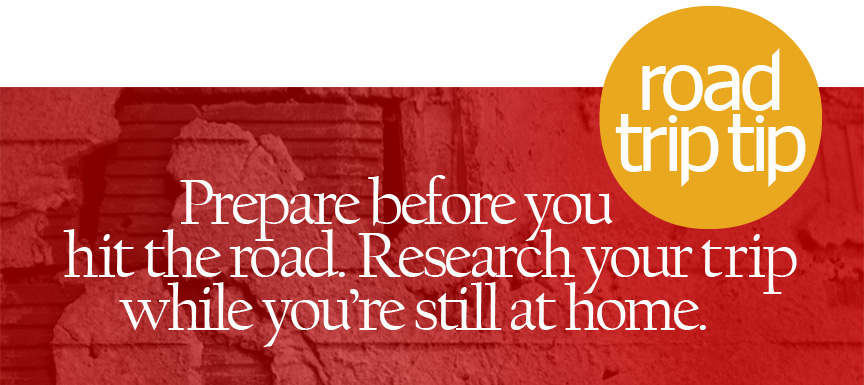
As part of our Grand Canyon vacation, over 15 years ago, we decided to drive the original Route 66 on the way back to Texas.
But finding the surviving route wasn’t easy.
Most segments were only documented online in paper maps by towns, Route 66 historical groups and private publishers.
So, state by state, we printed every map we could find to plan our trip.
We started at the south entrance to the Grand Canyon and retraced Route 66 mile for mile, between there and Texas, experiencing what mid-century travelers – free to explore America for the first time – must have experienced.
Several segments were miles out of the way taking us off the main thoroughfares to get to some of the pieces of what used to be the main road from Chicago to Los Angeles.
More than once, we’ve found routes, like Route 66, that couldn’t be plotted on Google Maps or similar mapping apps or programs. The only way to get there was printed paper maps plus help from Google to get to starting points.
When you’re looking for an elusive route:
Start by searching road names and looking for associations, chambers of commerce, publications and related sources in the area for maps. Then piece those together with conventional Google course maps.

“I can’t think of any place better than the Grand Canyon to start your Route 66 adventure from.”
While we didn’t document Route 66 the way we document trips today, the memories are as vivid now as they were then.
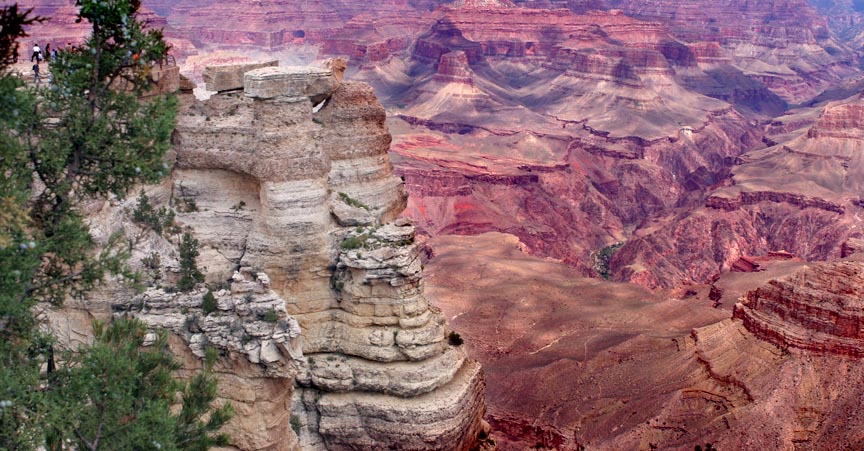
THE GRAND CANYON. It’s impossible to get a real perspective on how big the Grand Canyon is without actually being there. That said, look at the above photo taken from the South Rim of the Canyon then look at the photo below.
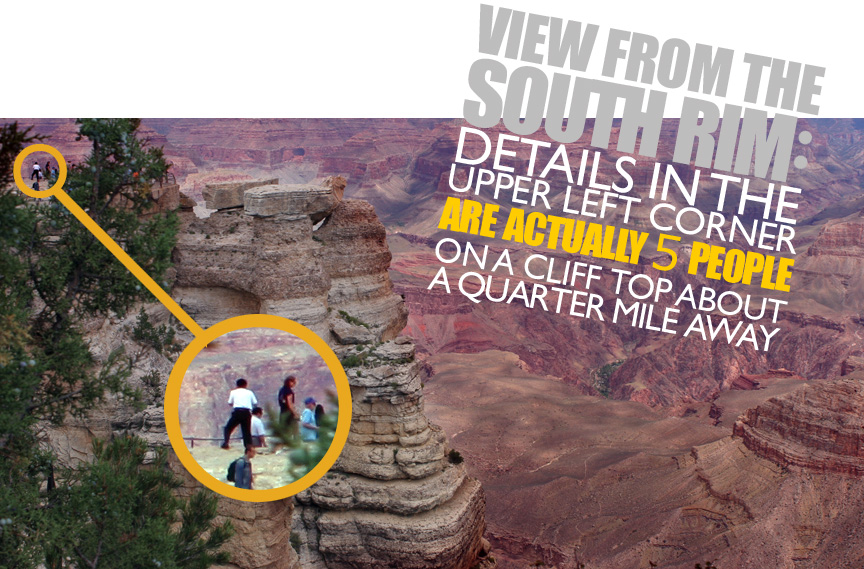
The details in the upper left corner are actually 5 people on a ridge about a quarter mile away on the same side of the Canyon that we’re on.
Standing here on the South Rim, we’re at a lower elevation giving us a better view of North Rim wall 10 miles away! And we’re 1 mile up looking down at the bottom of the Canyon – that’s like standing on top of 3 of the new One World Trade Center buildings, 1776 feet tall each, and looking straight down!
I still remember the feeling I got the first time we walked up to the edge of the rim of the canyon and saying to Nicole, “This is something you would never get tired of looking at.”
Route 66: The road home.
Winding our way back home took us through Winslow and Holbrook, Arizona, to the Petrified Forest, the Wigwam Motel, the 5 Mile Crater and through Sante Fe, New Mexico.
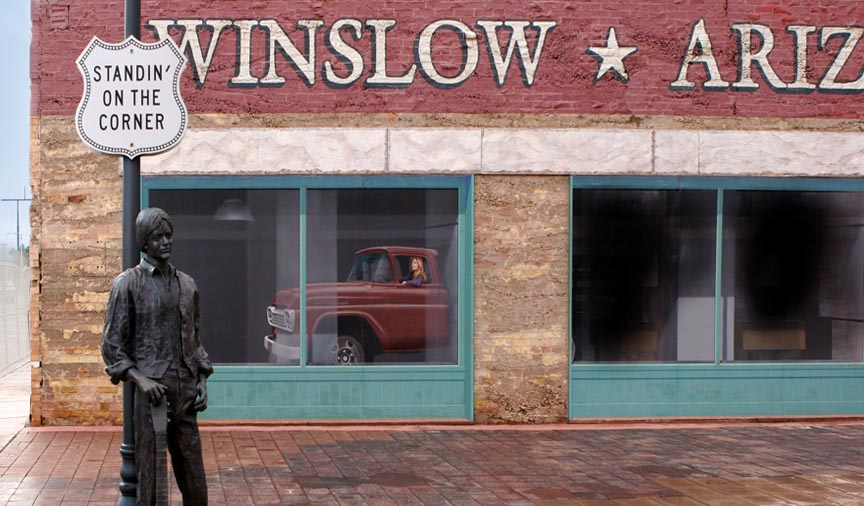
WINSLOW, ARIZONA. For the obvious reason (unless, of course you’ve never heard of the Eagles, or listened to Take It Easy). And yes, there is a flat bed Ford. It was parked near the statue of Don Henley.

THE WIGWAM MOTEL. Holbrook, Arizona. Built and opened for business in 1959 by Charles E. Lewis, The Wigwam is still operated by the Lewis family today. Each unit has been updated over time and includes air conditioning and cable television.
While we didn’t stay at the Wigwam because of conflicts in our travel schedule, this is one must-stay we will make when we come back for a second trip.
THE 5 MILE CRATER. Winslow, Arizona. Caused by a meteor that fell where, 50,000 years later, The 5 Mile (wide) Crater it created would be conveniently located within 5 miles of civilization and travel.
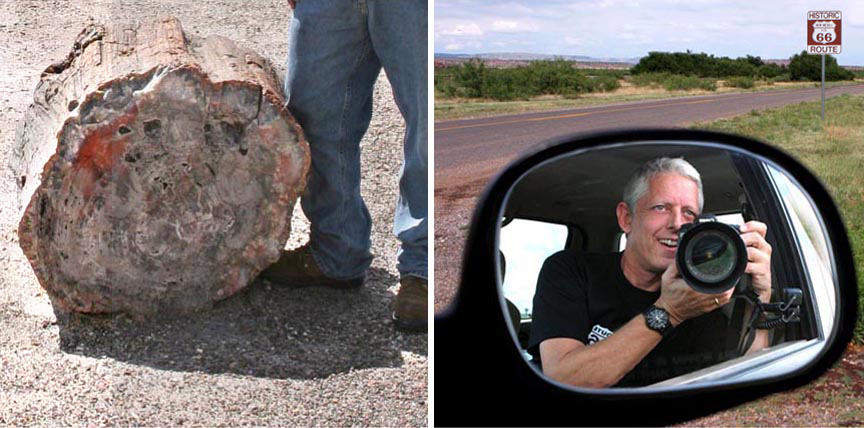
THE PETRIFIED FOREST. Just outside Holbrook, Arizona, where our middle son asked “Where are the trees?” not realizing that they had all fallen into mud and debris millions of years ago and become petrified then cut into pieces (left photo).
SANTA FE, NEW MEXICO. Since Santa Fe wasn’t on our route home, we had to add 54 miles thru the mountains to tour their unique architecture and visit their galleries and restaurants. When we’re close to Santa Fe again it will be an overnight must stay.
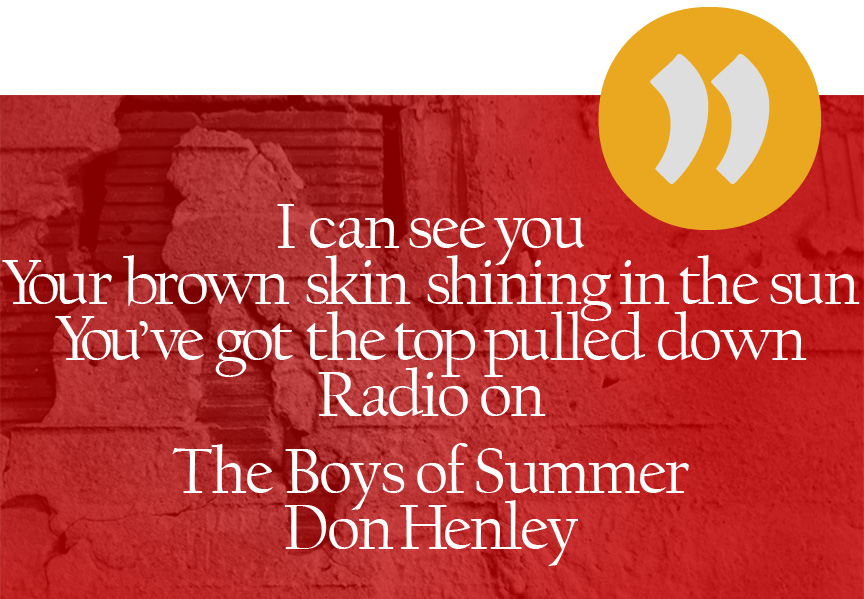
Today, we’re still on the road, living Don Henley’s vision with the top pulled down, radio on.

Road trip categories: Road Trip: Staying out one or more nights. Out and Back Road Trip: Single day destinations. Backyard Road Trip: Exploring our own city for new things to do, places to stay and eat.
The Grand Canyon Grand Canyon, Arizona. Petrified Forest Petrified Forest, Arizona. Wigwam Motel 811 W Hopi Drive, Holbrook, Arizona. Meteor Crater National Landmark (5 Mile Crater), Interstate 40, Exit 233, Winslow, Arizona. Winslow, Arizona (Standin’ on the Corner), Chamber of Commerce 523 W. Second St Winslow, Arizona.
ABOUT I DISCOVERING ROUTE 66 I CONTACT

Steve Holloway
Drop Top Road Trips Creative Director, Designer, Content Manager, Writer, Photographer
WRITTEN & PHOTOGRAPHED BY: STEVE HOLLOWAY
My career has been divided between two disciplines: design and photography.
First, as a photographer creating fashion images for print advertising, product images for catalogs and corporate images for financial advertising and annual reports.
Then founding Holloway Associates, a marketing and design firm producing radio and television advertising for regional retail accounts and designing publications, corporate identity packages, point-of-sale displays, and collateral materials for home lighting control and athletic shoe manufacturers.
What was behind the leap from photography to design? Read Influences for a deep dive into who my influences were and how their example first introduced me first to photography then to design and communication allowing me to develop the skill set to pursue those disciplines fulltime.
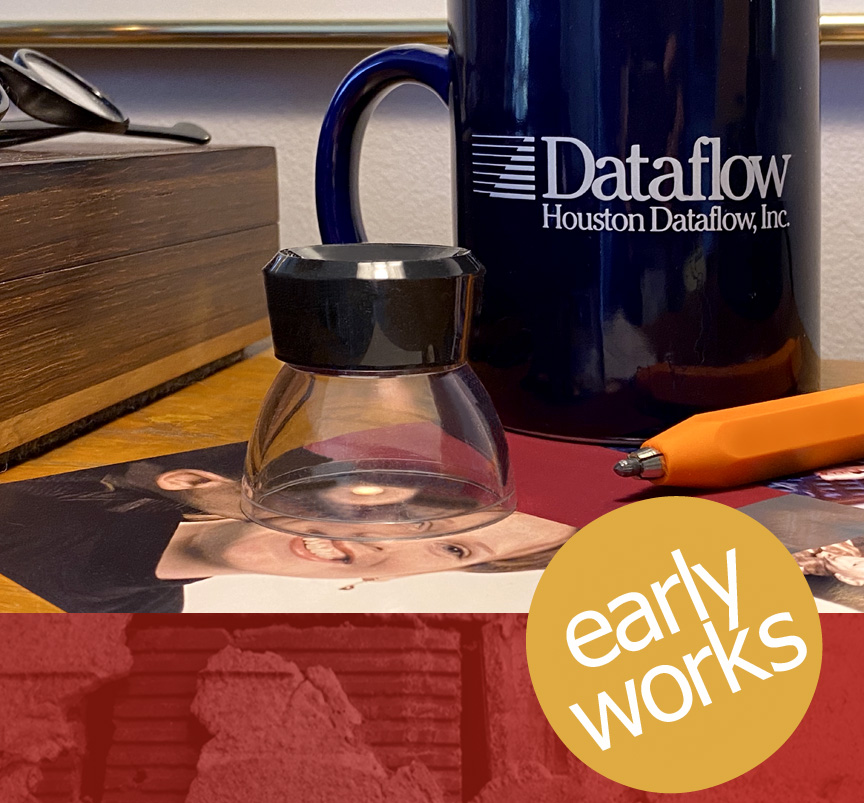
After 8 years, I wound down Holloway Associates and returned fulltime to commercial shooting. For the next twenty years I created product, food, fashion, architectural, destination and event photographs for retailers, corporations and university clients.
Today, Drop Top Road Trips is my only account. And I am the one (and only) writer, photographer, designer, creative director, content manager and navigator. It’s my job to create content that is fun to look at and fun to read. (And to keep us on course when we’re out on the road.)

